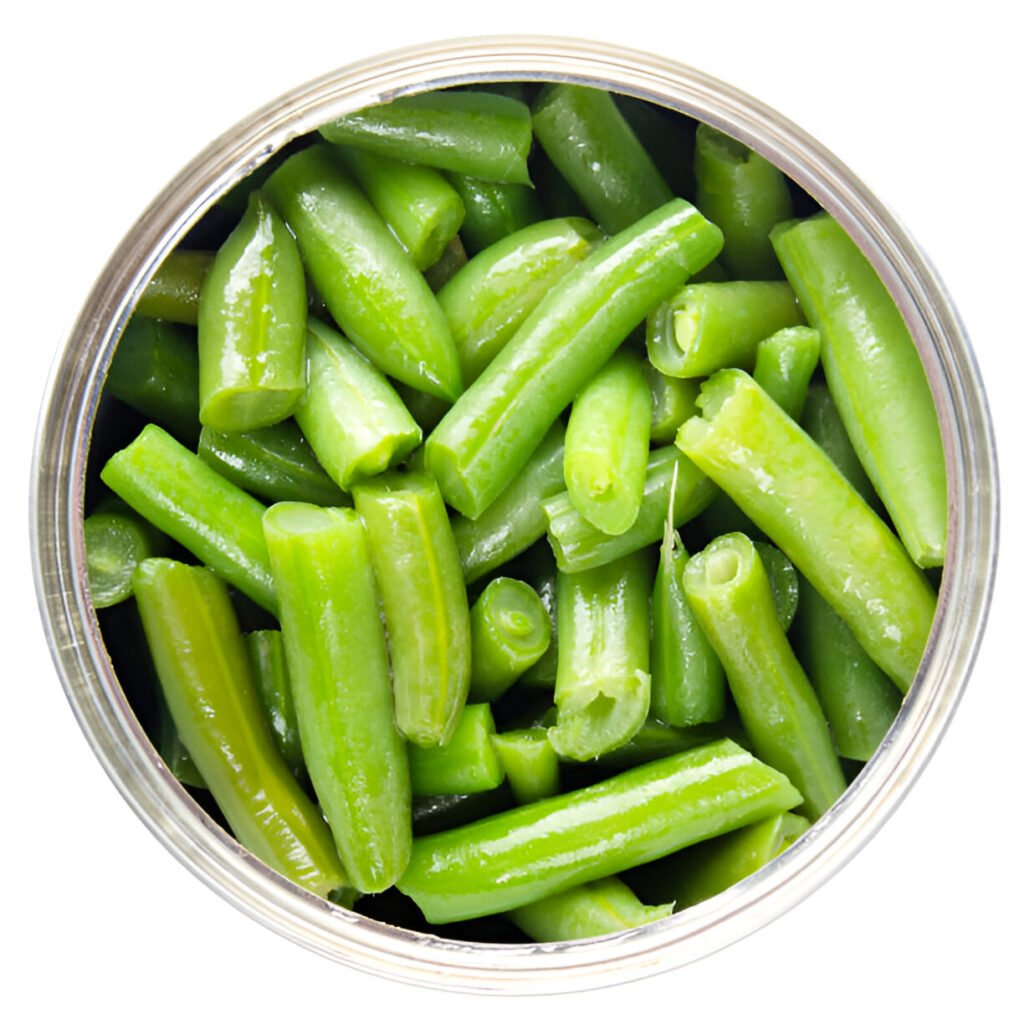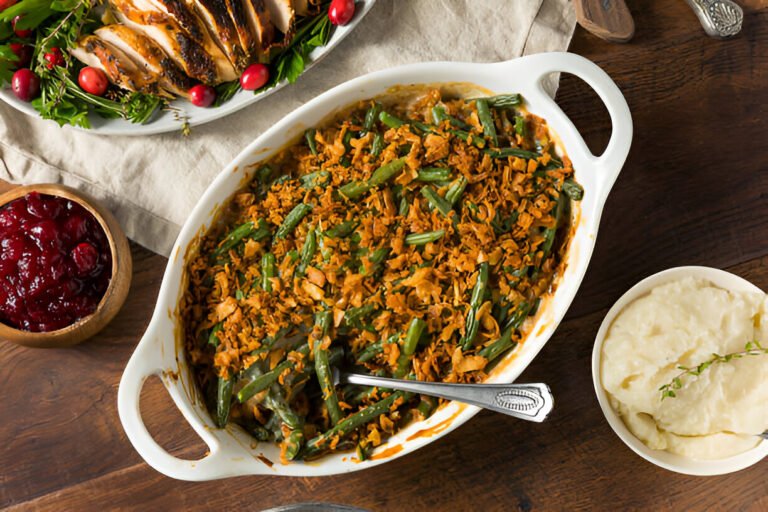How to Freeze Green Beans Without Blanching: Quick & Easy
When it comes to preserving the bounty of summer, freezing green beans is a no-brainer. But let’s be honest—blanching feels like an extra step that life doesn’t always have time for.
I used to think skipping it was a cardinal sin, but then I discovered a game-changer: freezing green beans without blanching. It’s quick, easy, and perfect for busy folks who still want to enjoy fresh-tasting beans months later. Let me walk you through my tried-and-true method.
Why Freeze Green Beans?
Freezing green beans is a game-changer for anyone looking to keep their veggies fresh and ready to use. By freezing them, you lock in their nutrients and flavor, ensuring they taste almost as good as the day you picked or bought them. It’s like hitting the pause button on freshness!
One of the biggest perks is the convenience it adds to meal prep. Imagine having a stash of green beans ready to toss into soups, stir-fries, or casseroles without a last-minute trip to the store. It’s a time-saver that makes cooking on busy nights a breeze.
| Benefits | How It Helps |
| Retains nutrients | Preserves vitamins and minerals |
| Saves time | Ready-to-use for quick meals |
| Reduces food waste | Keeps excess beans from spoiling |
Plus, freezing green beans helps cut down on food waste. Instead of letting extra beans go bad, you can store them for months, making the most of your groceries. It’s a win-win for your kitchen and the planet!
Why Skip Blanching Green Beans?

Blanching—briefly boiling veggies before freezing—is the gold standard for preserving color and texture. But sometimes, life throws too many balls in the air, and blanching feels like one too many. I learned that while blanching helps, it’s not the only way to freeze green beans. Skipping it saves time, and if you do it right, you can still enjoy vibrant, crunchy beans later.
Here’s the kicker: unblanched green beans might lose a bit of their bright green hue and crispness over time, but they’ll still taste great in soups, stews, or casseroles. If you’re using them in cooked dishes, you won’t even notice the difference.
What You’ll Need
Before we dive in, let’s gather the essentials. You don’t need much—just a few basics:
- Fresh green beans: Look for firm, bright green beans without blemishes.
- A sharp knife or kitchen shears: For trimming the ends.
- A baking sheet: To freeze the beans individually.
- Freezer-safe bags or containers: For long-term storage.
- A marker: To label your bags (trust me, you’ll thank yourself later).
Step-by-Step: Freezing Green Beans Without Blanching
1. Wash and Trim the Beans
Start by giving your green beans a good rinse under cold water. I like to spread them out on a clean kitchen towel to dry while I prep. Next, grab your knife or shears and trim off the stem ends. If you’re feeling fancy, you can snap them by hand—it’s oddly satisfying.
2. Dry Them Thoroughly
This step is crucial. Any extra moisture can lead to freezer burn, which is the arch-nemesis of frozen veggies. Pat the beans dry with a towel or let them air-dry for a bit. I usually give them a gentle shake in a colander to speed things up.
3. Flash-Freeze on a Baking Sheet
Here’s where the magic happens. Spread the beans in a single layer on a baking sheet. Make sure they’re not touching—this prevents them from sticking together later. Pop the sheet into the freezer for about 1-2 hours, or until the beans are frozen solid.
4. Transfer to Freezer Bags
Once the beans are frozen, transfer them to freezer-safe bags or containers. Squeeze out as much air as possible before sealing—this helps prevent freezer burn. Don’t forget to label the bags with the date. I’ve learned the hard way that unlabeled frozen veggies can become a mystery box.
| Read: How to Dehydrate Green Beans: Preserve Your Beans the Right Way |
Thawing and Cooking Frozen Green Beans
When it comes to cooking frozen green beans, knowing how to thaw and prepare them can make all the difference. While you can toss them straight into dishes like soups or casseroles, thawing them properly ensures frozen green beans cook evenly and retain their best taste and texture.
Recommended Thawing Methods
- Refrigerator Thawing: Place the frozen green beans in the fridge overnight. This slow thaw keeps them firm and ready to cook.
- Quick Thawing: For a faster option, seal the beans in a plastic bag and submerge them in cold water for 30 minutes.
Cooking Tips for Best Results
- Steaming: Steam thawed green beans for 5-7 minutes to keep them crisp and vibrant.
- Sautéing: Toss them in a hot pan with olive oil, garlic, and a pinch of salt for a flavorful side dish.
- Avoid Overcooking: Whether boiling or microwaving, cook just until tender to preserve their texture.
| Cooking Method | Time | Best For |
| Steaming | 5-7 minutes | Retaining crispness |
| Sautéing | 8-10 minutes | Adding flavor |
| Boiling | 4-6 minutes | Quick preparation |
With these tips, your frozen green beans will taste fresh and delicious every time!
Statistic: “Over 60% of home cooks who freeze green beans without blanching report that the no-blanch method saves them at least 30 minutes of prep time, while still delivering satisfactory taste and texture for cooked dishes.”
– Home Cooking Trends Report, 2023
This statistic highlights the time-saving benefits and practicality of freezing green beans without blanching, while acknowledging its suitability for certain types of recipes. Let me know if you’d like further adjustments!
| Check out: How Many Green Beans Per Person? |
Tips for Success
Use within 6 months: While unblanched green beans can last up to a year, they’re best used within 6 months for optimal flavor and texture.
Portion them out: Freeze the beans in smaller portions so you can grab just what you need.
Skip the thawing: When you’re ready to use them, toss the frozen beans straight into your dish. No need to thaw!
How Unblanched Green Beans Hold Up
Let’s get real: unblanched green beans won’t stay as crisp or vibrant as blanched ones. But here’s the thing—they’re still perfectly delicious in cooked dishes. I’ve used them in everything from stir-fries to casseroles, and they’ve never let me down.
| Blanched vs. Unblanched | Texture | Color | Best Uses |
| Blanched | Crisp, fresh-like | Bright green | Salads, side dishes |
| Unblanched | Slightly softer | Fades slightly | Soups, stews, casseroles |
My Favorite Recipes for Frozen Green Beans
If you’re wondering how to use your frozen green beans, here are a few of my go-to recipes:
Green Bean Casserole: A classic comfort food that’s perfect for holidays or weeknight dinners.
Stir-Fried Green Beans: Toss them in a hot pan with garlic, soy sauce, and a sprinkle of sesame seeds.
Hearty Vegetable Soup: Add them to a pot of soup for a boost of color and nutrition.
One-Pot Chicken and Green Beans: A simple, flavorful dish that’s ready in under 30 minutes.
Why I Love This Method
Freezing green beans without blanching has been a game-changer for me. It’s quick, easy, and fits into my busy lifestyle. Sure, blanching has its perks, but when I’m juggling work, family, and everything in between, this method is a lifesaver. Plus, it’s a great way to reduce food waste and enjoy summer’s bounty all year round.
So, the next time you find yourself with a surplus of green beans, give this method a try. It’s proof that sometimes, the easiest way is the best way.

Kathy is a restaurateur, artist, and blogger. After spending more than 10 years in the restaurant industry, she has decided to go digital and share her expertise and experience online.






